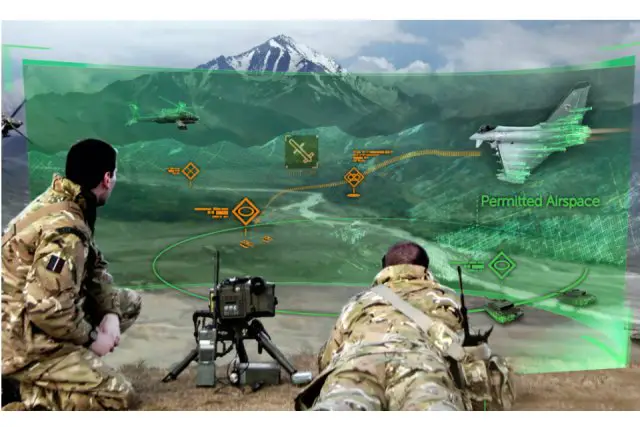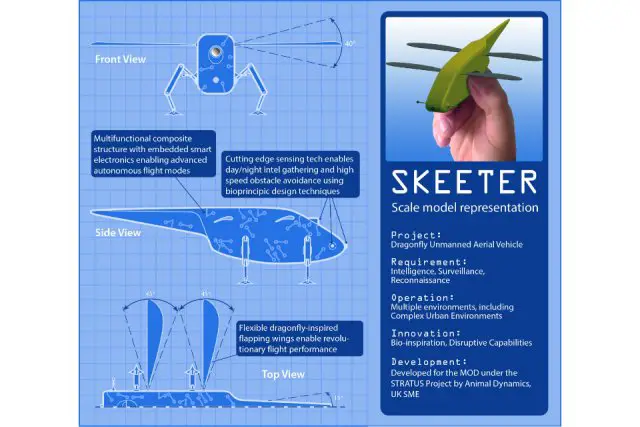|
|
|||
|
Defence & Security News - United Kingdom
|
|||
|
|
|||
| United Kingdom Defence Secretary launches new innovation push backed by £800m Fund | |||
|
Surveillance drones inspired by dragonflies, laser weapons, mobile robots that can inspect incidents involving chemical materials, sensors that use gravity to survey underground structures in minutes, and virtual reality helmets to practice calling in simulated air strikes. These are the types of futuristic technology that along with other smart solutions are set to be backed by the government’s new defence innovation initiative, which launches today.
|
|||
|
|
|||
 Hyper-reality training tech developed by Close Air Solutions. Copyright MOD/Close Air Solutions |
|||
|
|
|||
|
The plan will transform how defence deals with the challenges of tomorrow, to gain critical advantage for our defence and security forces:
An Innovation and Research Insights Unit (IRIS) will anticipate emerging trends in technology and analyse the implications for UK Defence and Security, informing critical decisions to maintain our military advantage and protect the UK. The best and brightest individuals and companies will be invited to pitch to a dragon’s den style panel, backed by a fund of around £800m over 10 years. It will involve taking more risks in backing ideas, with a fast-track for truly novel ideas to match the pace of smaller firms. Once strategy and investment decisions have been taken, a dedicated hub will act as a ‘defence and security accelerator’, ensuring that innovative solutions to our most pressing national security challenges are developed at pace to stay ahead of our adversaries. Aimed at transforming the Ministry of Defence’s creative culture, the Innovation Initiative will fundamentally change the way defence does business. The initiative will challenge government to collaborate better with industry, academia and allies, and target new providers to boost the competitive advantage of UK defence and find answers to our most pressing national security questions from across sectors at pace. A challenge function, drawing on external innovation talent and expertise, will ensure the MOD employs the best commercial practices and maintains its focus on innovation. The full launch event for the Initiative in September will see a prospectus, exhibitions and explain how and when industry can apply to the Innovation Fund. Defence Secretary Michael Fallon said: "This new approach will help to keep Britain safe while supporting our economy, with our brightest brains keeping us ahead of our adversaries." "Backed by a defence budget that will rise every year until the end of the decade, it will ensure that the UK maintains its military advantage in an increasingly dangerous world." The initiative is part of the government’s ambition to deliver an economy that works for all by building on the UK’s science, technology and innovation strengths to harness emerging technologies and other smart solutions. The Ministry of Defence currently spends up to 20% of its Science and Technology budget on cutting edge “disruptive capability” projects. Disruptive capabilities displace an established technology and shake up industry. |
|||
|
|
|||
 A tiny Unmanned Aerial System with flapping wings inspired by the biology of a dragonfly, currently in development with Animal Dynamics. Copyright MOD/Animal Dynamics. |
|||
|
|
|||
|
Current projects include:
A tiny Unmanned Aerial System with flapping wings inspired by the biology of a dragonfly, currently in development with Animal Dynamics. The ‘micro-drone’ will use cutting edge micro-engineering for unparalleled levels of performance. This has the potential to have a huge impact on intelligence-gathering in future operations in complex urban environments. A new Quantum Gravimeter developed with the University of Birmingham could allow us to survey underground structures in minutes rather than weeks. This portable gravity sensing system uses cold atom quantum technology and two gravimeters coupled together for the first time to allow for higher sensitivity and reliability when carrying out surveys, enhanced robustness to external noise sources and drastically reduced measurement time. Applications for our Armed Forces range from spotting enemy tunnels to supporting disaster relief. And we are developing a capability demonstrator with industry that will investigate the potential of laser weapons to target and defeat aerial threats. |
|||














